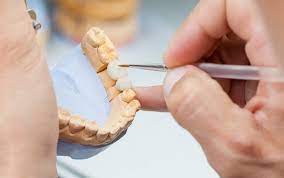
Choosing the Right Dental Lab for Your Practice
In the modern dental industry technology plays a significant part in improving the efficiency, accuracy, and quality of dental labswork. From digital impressions to the latest CAD/CAM systems, technology has changed the way dental labs operate, leading to better patient outcomes and streamlined workflows.
One of the most important innovations is the use for digital images. Traditional impression methods often involved messy, uncomfortable materials and were susceptible to errors. Digital impression systems use intraoral scanners to capture exact, 3D images of a patient’s mouth and gums. These digital impressions are sent directly to dental labs directly. dental lab, reducing the possibility of errors and need for physical impressions. This does not only increase the patient’s comfort, but also speeds the process of creating dental restorations.
Another major technological advancement is the fusion of Computer-Aided Design (CAD) along with Computer-Aided manufacturing (CAM) systems. The CAD software enables dental professionals to design restorations like bridges, crowns, and dentures, with incredible precision. After the design is completed, CAM technology takes over manufacturing the restoration. Using the milling machine or 3D printer, CAM systems create high-quality dental products using a variety of materials, such as ceramics and resins. This technology reduces the time needed for production and guarantees a high level of accuracy.
3D printing has also become an important factor within dental labs. It permits the manufacturing of custom dental devices, including orthodontic aligners and surgical guides. 3D printing is flexible in terms of design and materials, allowing for more personalized treatments and faster processing times.
In addition, digital workflow integration enhances communication between dentists and dental labs. Digital collaboration platforms and cloud-based tools enable seamless sharing of patient data and design files, facilitating more efficient coordination and decreasing the possibility of miscommunication.
Overall, technology has transformed dental labs, making them more efficient and able to deliver top-quality results. As technology continues to improve, dental labs are likely to see further advancements in accuracy, satisfaction of patients and overall efficiency in the field of dental.
Proudly powered by WordPress. Theme by Infigo Software.